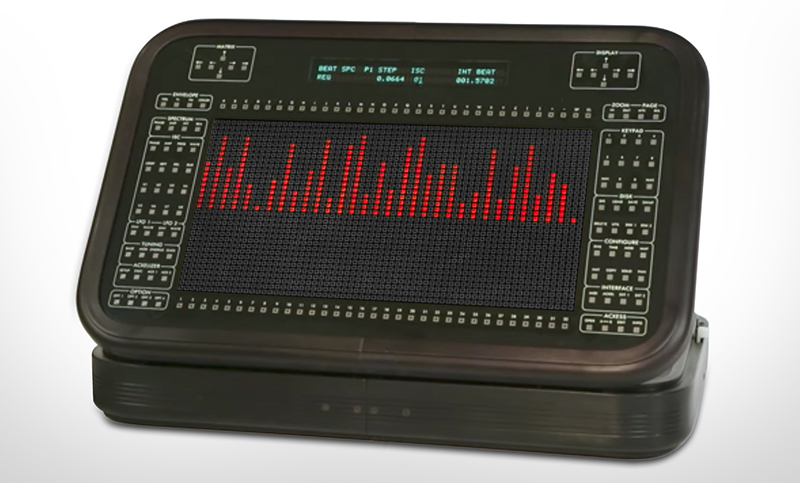In this video, we embark on an in-depth exploration of the Acxel, an additive resynthesizer developed by Canadian manufacturer Technos in the late 1980s. The Acxel is a rarity—fewer than forty units were ever produced. Finding an Acxel (let alone a functional one) can be a bit difficult, so we opted to take the opportunity to talk through its basic concepts and workflow. It is too strange not to share!
Sonic Spectra and 2000 Touchplates
The Acxel focuses on additive synthesis—the process of controlling a large bank of oscillators and amplifiers, ultimately combining them together to form complex timbres. In practice, this is a bit more complex than typical subtractive synthesis: rather than needing only to consider a few parameters for each voice, the user suddenly needs to be able to control the pitch and loudness of a ton of oscillators. In the case of the Acxel, each voice contains no less than 32 oscillators and 33 amplifiers, meaning that the user needs to be able to access an enormous number of parameters to make significant changes to the sound's timbre. The Acxel overcomes this hurdle in a couple of ways.
The most obvious of the Acxel's strengths is its striking user interface: the Grapher. The Grapher is a touch-based control surface, prominently featuring a matrix of 2,048 LED-embedded touch plates. The Grapher gives the user the ability to simultaneously visualize and edit a sound's internal parameters via this large array of LEDs and touch plates, making for an extremely intuitive way to draw envelopes, to balance oscillators, and more. The most important timbral characteristics are arranged into spectra: display modes in which you can see the settings of a single parameter for each of a voice's 32 oscillators at one time. This makes it easy to quickly change the pitch of all oscillators relative to one another, or to adjust each oscillator's relative phase or amplitude. Of course, you can also use the Grapher to define waveshape, filter response, and plenty more—while it can't be used to trigger the internal sound engine, it is a powerful tool for tonal sculpting.
 The Grapher, displaying a resynthesized sound's Beating Spectrum.
The Grapher, displaying a resynthesized sound's Beating Spectrum.
The other of the Acxel's extreme advantages is its embrace of resynthesis: the process of analyzing a recorded sound, determining the most significant spectral contents, and re-creating the sound from scratch by using the captured data to drive an additive process. The Acxel can analyze sounds up to four seconds in length and recreate them from scratch using its enormous array of digital oscillators and amplifiers. This also enables full independence of a sound's duration and its pitch; whereas simple sample playback devices naturally link duration and pitch, the Acxel's focus on recreating a sound from information about its overtone structure enables time compression and expansion completely independent of the pitch parameter. Moreover, it gives the user the ability to reach inside of a sound's overtone structure, creating alien sounds out of familiar sources.
Feel free to scope out the above video or check out our more in-depth written explanation of the Acxel's inner workings here. It has been an inspiring and peculiar journey working with the Acxel, and I hope that you'll find it as fascinating as I do!







